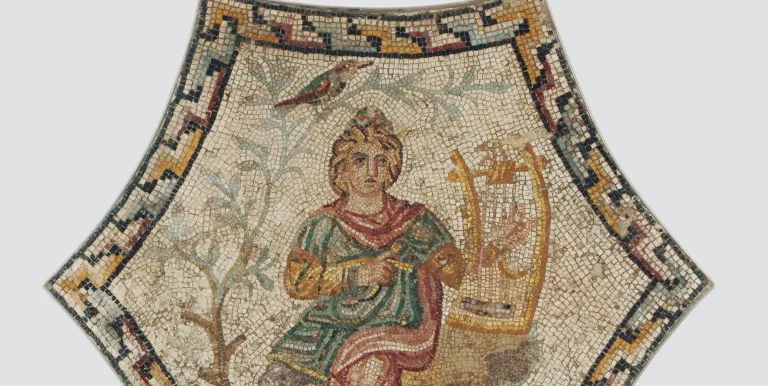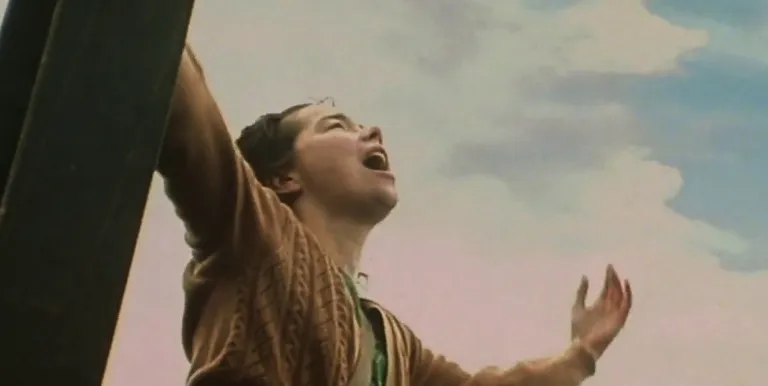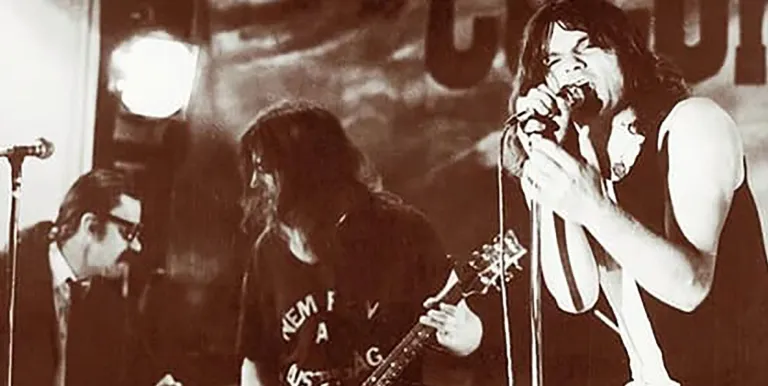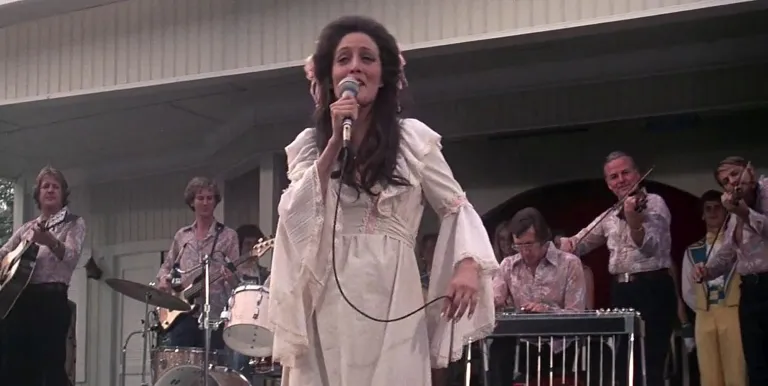One of the most interesting and valuable pieces in the antiquities collection of the recently reopened Museum of Fine Arts is the third-century mosaic from the Roman province of Africa makes guest appearance on giant banner at Müpa Budapest. International art dealers first brought the work from Tunisia to France, from where it ended up among the possessions of the Hungarian Museum of Fine Arts.
The hexagonal picture with arced sides shows Orpheus, one of the most familiar figures from Greek mythology, sitting on a rock. The image is made up mostly of flat rectangular stones 5-8 millimetres in length, but the more delicate details, such as the subject's face and the fingers of his left hand, are made up of much smaller mosaic stones with rich nuances in colour. The creator of the mosaic - primarily to enhance the effect of the colours - also supplemented the stones with flat bits of glass. The province of Africa, situated along the central North African coastline, was one of the wealthiest regions in the Roman Empire. In terms of its artistic output, the area was inextricably connected to the classical Greco-Roman culture of the Mediterranean, although it also preserved its own features throughout its history. It is therefore no surprise that Orpheus was among the important figures portrayed in North African mosaics. The musician's most famous deed was descending, while still alive, to the underworld to retrieve his wife, Eurydice. Enchanted by the sounds of his voice and lyre, the gods of the underworld returned the woman to him.
He could tame even wild beasts with his music, and the image of this divine minstrel harking back to the harmony of a golden age offered many different possibilities for interpretation that varied by period, region and intellectual tradition. This can be clearly seen in how the figure of Orpheus would also be adapted into early Christian art as it evolved, as one of the acceptable ways of depicting Christ. (Based on text by Árpád Miklós Nagy)
Presented by: Müpa Budapest
-
We wish to inform you that in the event that Müpa Budapest's underground garage and outdoor car park are operating at full capacity, it is advisable to plan for increased waiting times when you arrive. In order to avoid this, we recommend that you depart for our events in time, so that you you can find the ideal parking spot quickly and smoothly and arrive for our performance in comfort. The Müpa Budapest underground garage gates will be operated by an automatic number plate recognition system. Parking is free of charge for visitors with tickets to any of our paid performances on that given day. The detailed parking policy of Müpa Budapest is available here.








